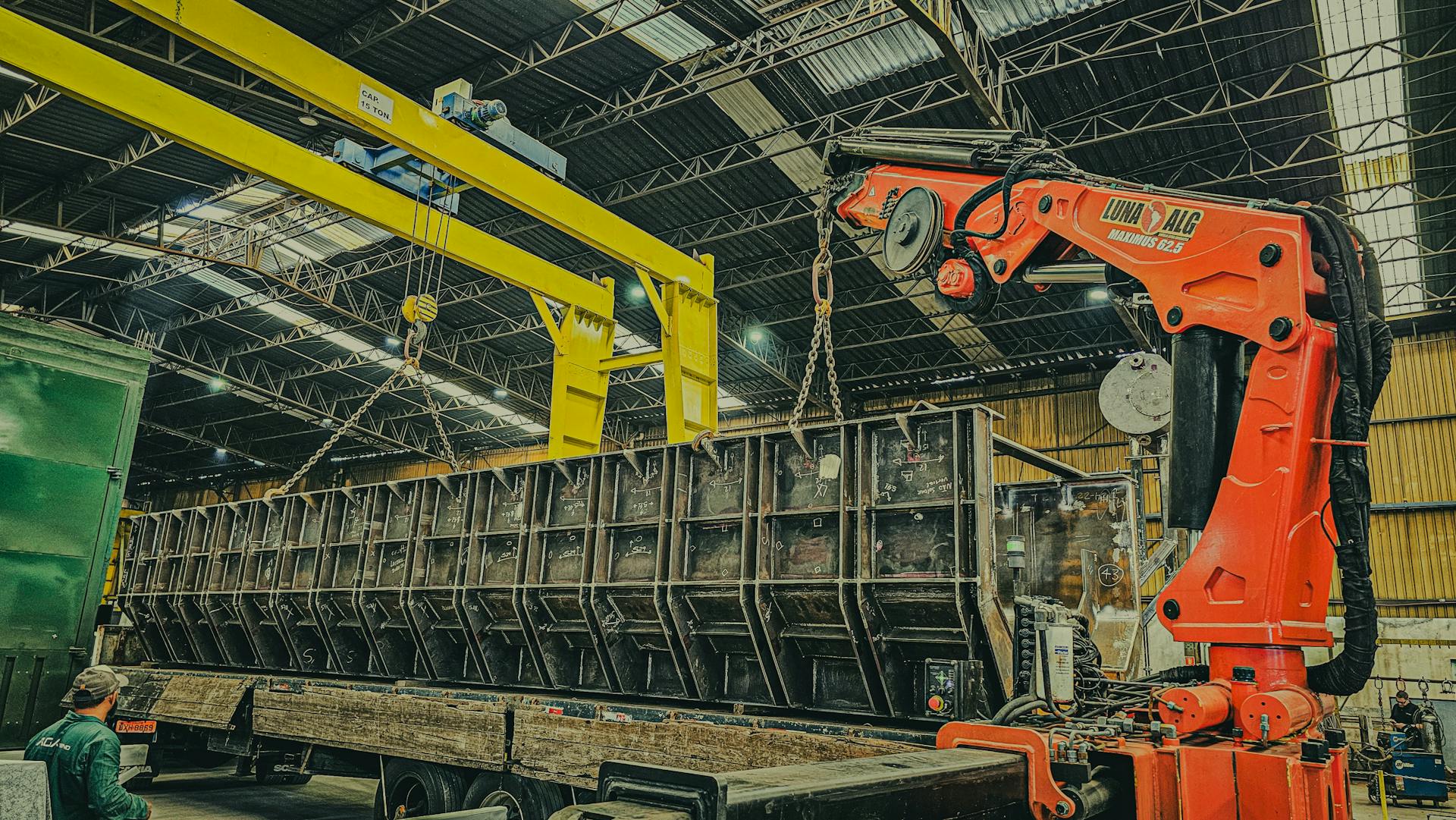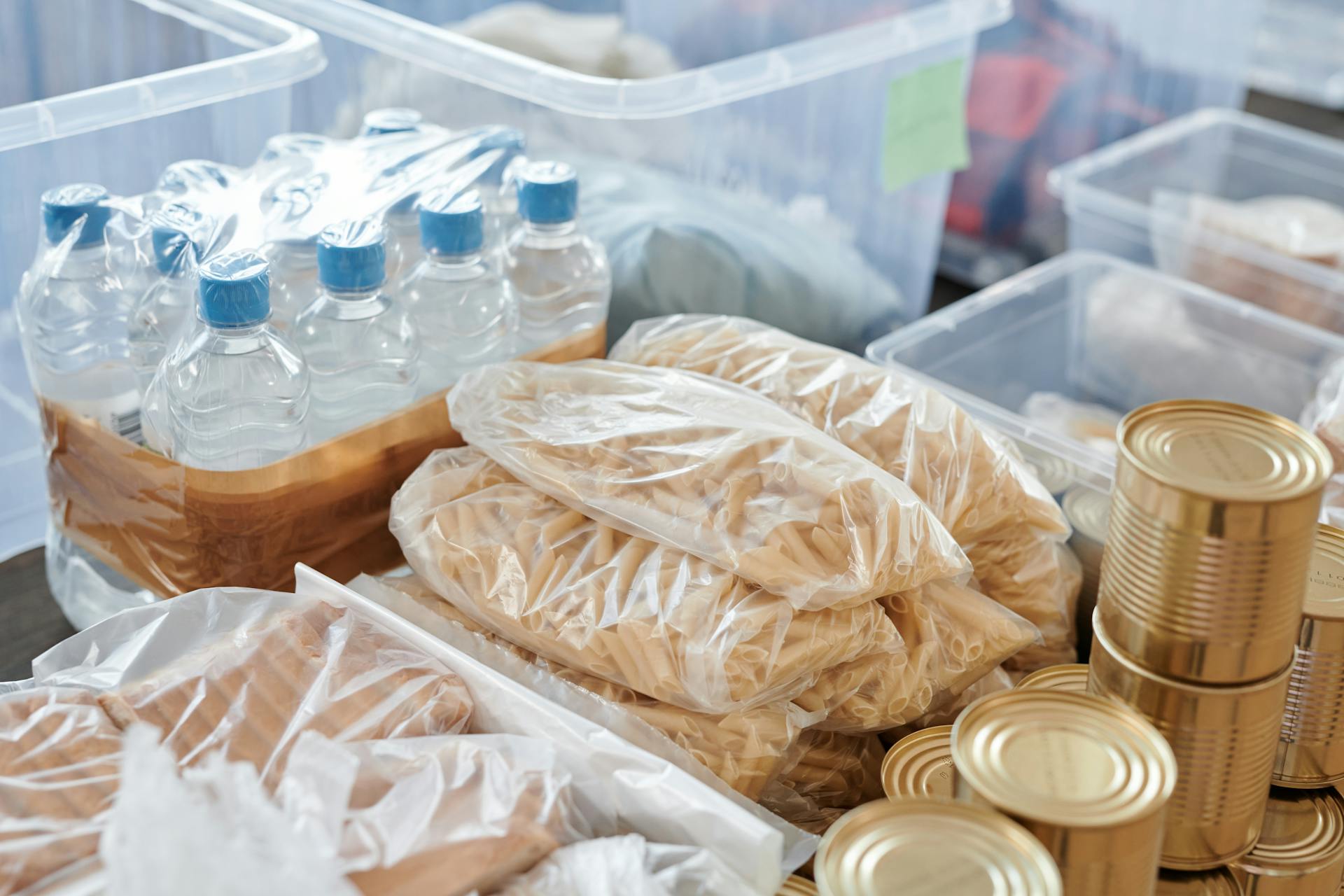
When it comes to securing your shipping container, the right door hardware is crucial. A good lock can make all the difference in preventing theft and unauthorized access.
A variety of lock types are available, including cam locks, deadbolt locks, and hasp locks. These locks come in different materials, such as steel and aluminum.
To choose the right lock for your shipping container, consider factors like climate, usage, and security level. For example, if your container will be exposed to harsh weather conditions, a stainless steel lock might be a better option.
Cam locks, in particular, are popular for shipping containers due to their ease of use and affordability.
For another approach, see: Cargo Trailer Door Locks
Shipping Container Door Hardware
Shipping container door hardware is a crucial part of container security and accessibility. Delta Mark offers an extensive inventory of ISO container door hardware to ensure your container doors are always working correctly.
Their ISO Shipping Container Door Sets include four lock rods with waist-high door handles, 8 keepers, 8 hinges, 8 hinge pins with washers, rectangular tube header, sill, and columns, 2 bottom corner castings assembled, welded, and ready to install.
The advantages of their shipping container doors include quick assembly, no jigs required, consistency of end product, durable exterior, ease of install, cost-effectiveness, and the ability to convert a 20' or 40' container into any size unit using their system.
Galvanized steel is used to construct all of their shipping container door hardware.
Delta Mark's shipping container door hardware is designed for durability and reliability, with easy installation and high-security features.
Here are some key features of their shipping container door hardware:
Delta Mark also offers other shipping container door parts, such as steel doors for shipping containers, storage & sea container door lock boxes, and high-security locks for shipping containers.
Explore further: Double Door Shipping Containers
Troubleshooting and Repair
Shipping container door hardware can be prone to damage due to exposure to moisture and salt air, causing corrosion of metal parts.
Regular inspection and maintenance can help identify and address issues before they become major problems. This includes checking for wear and tear on bushings, seals, and handles.
To prevent corrosion, make sure to clean container door parts with mild soap and water, and avoid using strong chemicals. Lubricate locks and hinges with a lubricant specifically designed for that purpose.
Common problems with container door components include misadjusted hinges or locking hooks due to vibrations or uneven terrain, and cracked or lost elasticity of door seals.
Common Problems and Solutions
Exposure to moisture and salt air can cause corrosion of metal parts, which is a common issue with shipping containers. This can lead to weakened door handles and hinges.
Repeated use can cause wear and tear on bushings, seals, and handles, making them less effective and potentially compromising the security of the cargo.
Hinges or locking hooks may be misadjusted due to vibrations or uneven terrain, causing the door to malfunction.
Door seals can crack or lose their elasticity over time, allowing moisture and air to enter the container and compromising the security of the cargo.
You might enjoy: Alaska Air Shipping Pets

Here are some common problems and their solutions:
How to DIY
If you're handy with tools and want to save some money, DIY repairs can be a great option for container door issues. Most container doors are easy to maintain, and repairs can be done with minimal door container parts.
You'll need to assess the damage and determine which part needs to be fixed or replaced. Some common container door parts that may need replacement include the door frames, door seals, hinges, door locks, handles, and door bolts.
Container door frames are essential for the door's structural support, so if they're warped or damaged, you'll need to use a strong metal filler to grind and smoothen the surface. Replacement involves removing the old frame and installing a new one, which requires skilled personnel to ensure the door frame is plumb and square.
Door seals are vital in preventing water and air penetration, so if they're worn out, you'll need to remove the old seal, clean the surface, and apply a strong sealant. This process is relatively simple and can be done by following the manufacturer's instructions.
Suggestion: Shipping Container Door Parts
Hinges are critical hardware parts that facilitate door movement, so if they're worn out, you can replace them by removing the old screws and installing new hinges using screws and a screwdriver. This is usually a straightforward process.
If you need to replace the door locks, you'll need to remove the old lock and install a new one, following the manufacturer's instructions. Different types of locks have different installation processes, so be sure to follow the correct procedure.
You may also need to replace the handles, which are important container door accessories that enable users to open and close doors. This is a simple process that involves removing the old handle and installing a new one.
If you need to replace the door bolts, you can do so by removing the old bolts and installing new ones. This involves tightening nuts and bolts using a wrench.
Here's a quick rundown of the common container door parts that may need replacement, along with a brief description of the replacement process:
- Door frames: Remove old frame, install new one, ensure plumb and square
- Door seals: Remove old seal, clean surface, apply new sealant
- Hinges: Remove old screws, install new hinges
- Door locks: Remove old lock, install new lock, follow manufacturer's instructions
- Handles: Remove old handle, install new handle
- Door bolts: Remove old bolts, install new bolts, tighten nuts and bolts
Lockable Handles
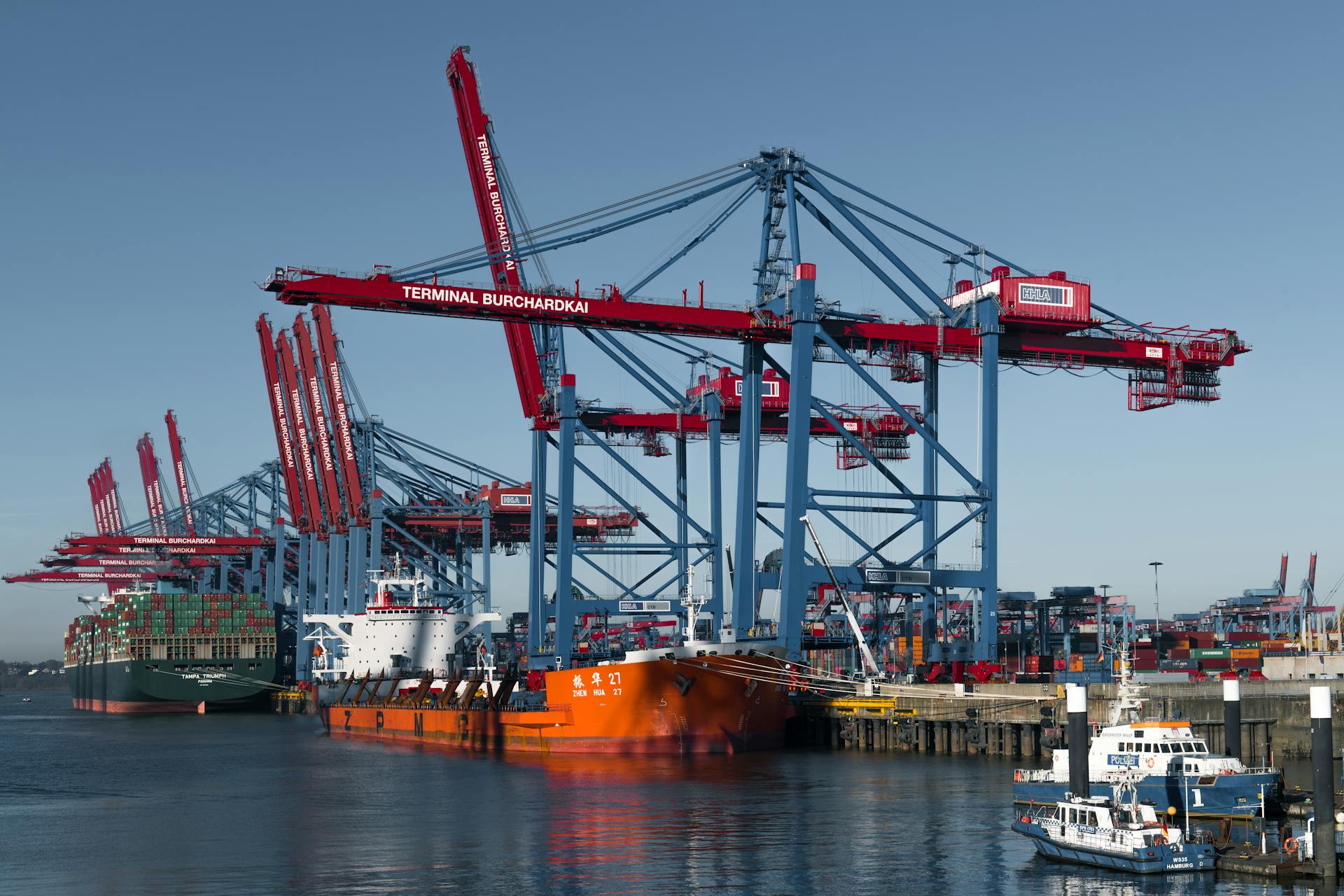
Lockable handles are a crucial part of a shipping container's security system. They ensure the door remains firmly closed during transport and storage, preventing unauthorized access.
Damage to the locking bars can compromise door security and result in theft of goods or exposure of the container to the elements. Quality locking bars are usually coated with a corrosion-resistant coating to prolong their life and maintain their functionality.
A faulty lock can cause the door not to lock properly, compromising the safety of the load. Modern locking knobs are made from high-quality alloys to reduce wear.
If you notice any issues with your lockable handles, it's essential to inspect them regularly to prevent damage. When cleaning, use mild soap and water, and avoid strong chemicals that can damage the door parts.
Here's a quick checklist to help you identify common issues with lockable handles:
By following these tips and regularly inspecting your lockable handles, you can ensure the security and safety of your shipping container and its contents.
Hardware Components

Shipping container door hardware is made up of various components that work together to ensure secure and smooth operation. The hinges are a crucial part of this system, connecting the door to the container frame and allowing it to open and close smoothly.
Hinges come in different sizes to accommodate various container sizes, and some container doors can have up to four hinges for added support. They are typically made of reinforced steel to provide strength and durability.
A well-functioning door locking system is essential to protect the contents of the container against loss, damage or unauthorized access. The locks come in different sizes to fit various container sizes, and some locks have an anti-shim feature that prevents thieves from breaking into the container.
Here are some common hardware components found in shipping container door hardware:
- Door handles: made of steel, with some designed with a padlock hole for added security
- Door seals: made from materials like rubber and foam, ensuring the doors close securely and preventing water and air from getting inside
- Door latches: locking mechanisms that secure the doors once they are closed
- Hinges: connect the door to the container frame, ensuring smooth operation and correct alignment
- Locking bars: vertical steel rods that attach to doors to hold them securely shut
Types of Hardware
Container door handles are made of steel and come with a padlock hole for added security. They're designed for pulling and pushing the doors open and shut.
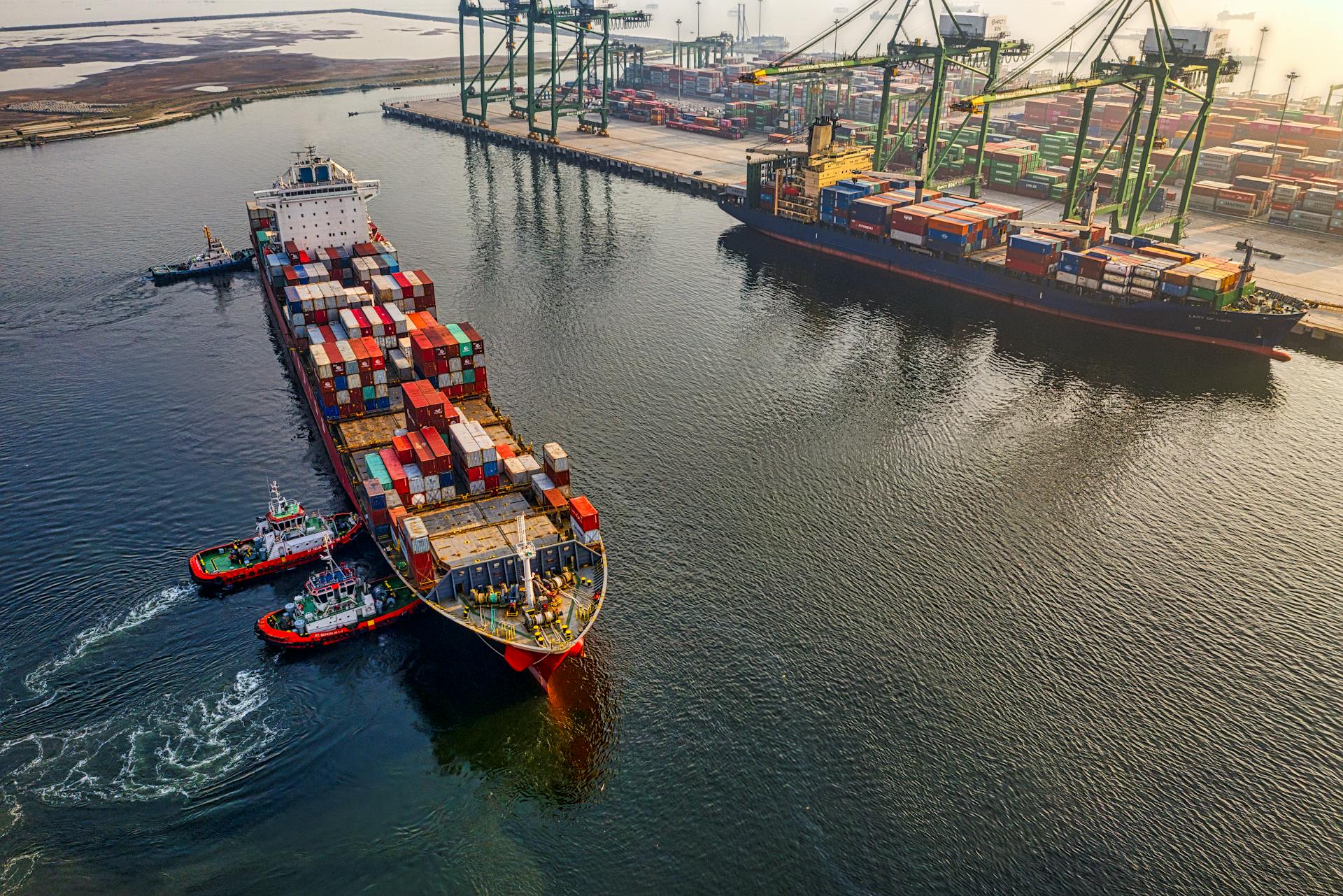
Container door hinges are typically made of reinforced steel to provide strength and durability. They come in different sizes to accommodate various container sizes.
Hinges are designed to withstand extreme loads and are usually made of a corrosion-resistant material like galvanized steel. They ensure the door opens smoothly and is correctly aligned to provide an effective seal.
Some container doors can have up to four hinges for added support. Worn or damaged hinges can cause misalignment, making the door difficult to open or close and damaging the seals.
Here's a list of common hardware components found in shipping containers:
- Container door handles
- Container door hinges
- Container door seals
- Container door latches
- Container door closure devices
- Hinge rods
- Door bearing brackets
- Door tie backs
These hardware components work together to ensure the door opens and closes smoothly, providing an effective seal and added security.
Locks and Latches
Locks and Latches are a crucial part of any shipping container's hardware components. They ensure the safe and secure storage of goods during transport.
Container door locks are made of hardened steel for strength and durability. They come in different sizes to fit various container sizes and have an anti-shim feature that prevents thieves from breaking into the container.
A well-functioning and reliable door locking system is essential to protect the contents of the container against loss, damage, or unauthorized access. This is especially important during maritime transport.
Door latches are locking mechanisms that secure the doors once they are closed. They pull the two doors together to seal the container and prevent unauthorized access.
Some container door latches have a locking bar that goes across the door for added security. This feature is particularly useful for protecting valuable cargo.
Types of locks include container door latches, handles, and locking bars. These components work together to ensure the proper functioning of the door locking system.
Here is a list of common lock and latch components:
- Container door latches
- Handles
- Locking bars
- Lockrods
- Cam keepers
- Door handles
Each of these components plays a vital role in protecting the contents of the container. It's essential to maintain and replace them regularly to ensure the security of the cargo.
Precision Laser Cut
Precision laser cutting is a process that allows for intricate and precise cuts in various materials. It's a game-changer for manufacturing hardware components, enabling the creation of complex shapes and designs with ease.

The Door Hinge Lug, for instance, is precision laser cut, which means it can be made with a high level of accuracy. This is particularly important for its function, as it holds the hinge pin in place at each end.
Made of steel, the Door Hinge Lug is a sturdy component that can withstand the demands of heavy use. Its precision laser cut design ensures a smooth and reliable operation.
Materials and Manufacturing
Shipping container door hardware is made from durable materials like stainless steel and aluminum, which can withstand harsh weather conditions and frequent use.
These materials are often chosen for their resistance to corrosion and ability to maintain their structural integrity over time.
The manufacturing process for shipping container door hardware typically involves machining and welding, which allows for precise control over the final product's dimensions and quality.
High-quality manufacturing processes, such as CNC machining, are often used to ensure the hardware meets strict industry standards.
Shipping container door hardware is designed to be highly functional, with features like secure locking mechanisms and durable hinges that can withstand heavy use.
A well-designed locking mechanism can provide an additional layer of security for the container and its contents.
The design of shipping container door hardware must also take into account the need for easy maintenance and repair, with features like removable parts and simple replacement procedures.
Spare Parts and Replacement
Spare parts for shipping container door locking systems are designed to withstand harsh transport conditions, ensuring the proper functioning of the door locking system.
A well-functioning and reliable door locking system is an essential element in ensuring the secure locking of containers, protecting the contents against loss, damage, or unauthorized access.
The door locking system and its spare parts play a crucial role in protecting valuable cargo during maritime transport and contribute to safe handling.
Spare parts for shipping container door locking systems are easy to install or replace if necessary, allowing the contents of the container to be quickly secured.
Related reading: Jinhui Shipping and Transport
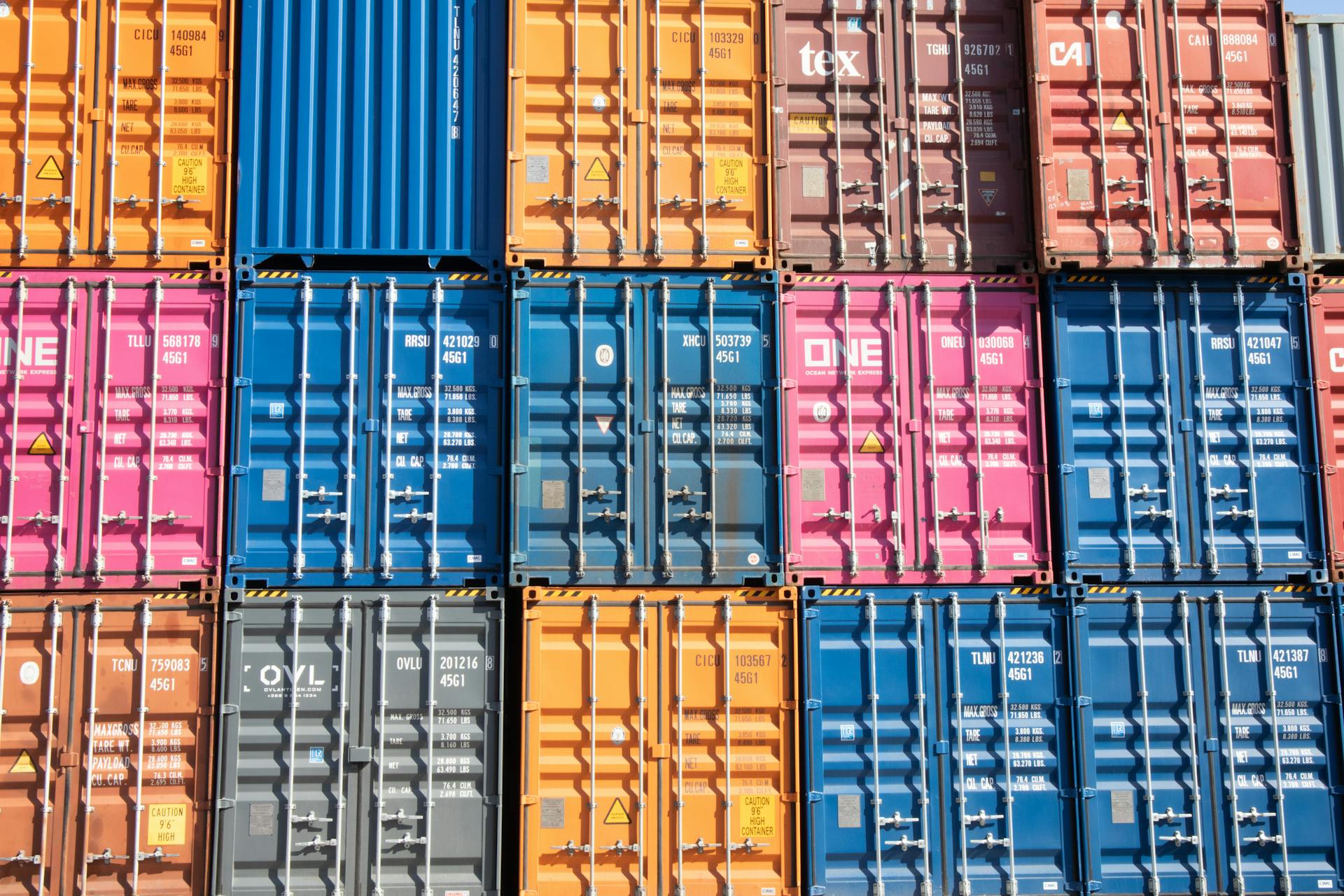
Container door spares are the individual components that make up a container door, used to maintain the integrity, functionality, and safety of the container door.
These parts ensure that the container door functions smoothly and efficiently and protects the container from environmental impacts and unauthorized access.
Hinges or locking shafts may be misadjusted due to vibrations or uneven terrain, which can compromise the security of the container door.
Container door spare parts can be easily selected from a catalogue and sent for replacement, with the individual parts, catalogue number, and exact details provided.
By replacing worn or damaged components, you can maintain the security and integrity of your shipping container door, ensuring the safe transport of goods over long distances.
Installation and Transport
Installing shipping container door hardware can be a straightforward process if you have the right tools and knowledge.
A typical installation involves removing the existing door hardware, which usually consists of a latch, hinges, and a lock. This process can be time-consuming, but it's essential to ensure a proper fit for the new hardware.
The most common type of shipping container door hardware is the cam lock, which is easy to install and provides a high level of security. Cam locks are available in various sizes and can be mounted on the door frame or the door itself.
Shipping containers are often transported to their destinations via flatbed trucks or shipping vessels, and the door hardware must be designed to withstand the rigors of transportation. This is why many manufacturers use stainless steel or galvanized steel for their door hardware, which is more resistant to corrosion and wear.
A well-designed door hardware system can help prevent damage to the container during transport, which is why it's essential to choose a system that meets the container's specific needs.
Safety and Security
Regular maintenance of shipping container door hardware is crucial for ensuring safe and secure storage. A faulty latch can cause the door to fail to lock properly, compromising the safety of the cargo.
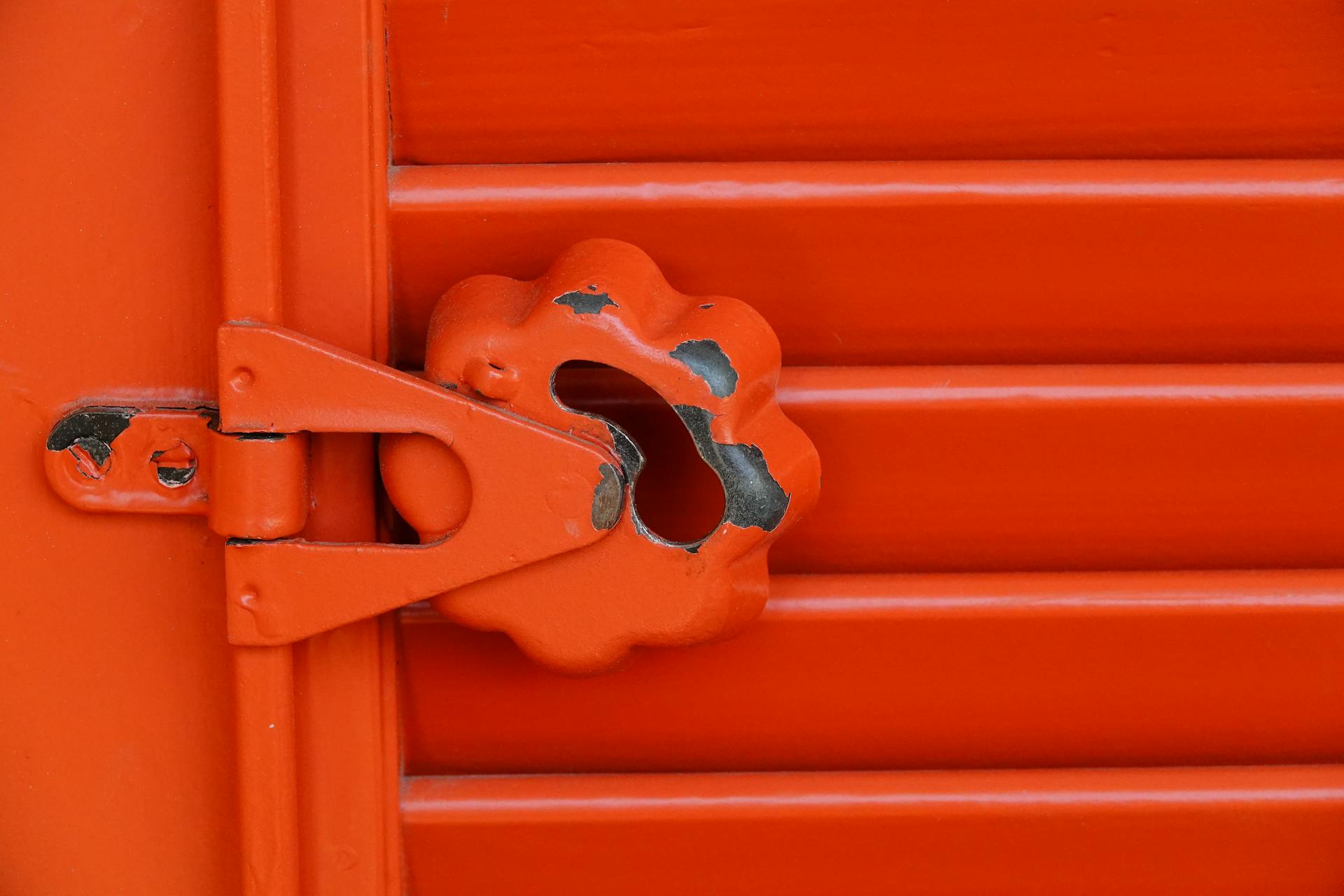
To maintain the security of your container, it's essential to carry out a thorough inspection of container door parts regularly. This will help identify any damage or wear and tear, which can compromise the container's security.
Some container door parts require lubrication for smooth operation, such as locks and hinges. When lubricating, use a lubricant specifically designed for that purpose.
Here are some key maintenance requirements for container door parts:
Quality locking bars are usually coated with a corrosion-resistant coating to prolong their life and maintain their functionality. A faulty lock can cause the door not to lock properly, compromising the safety of the load. Modern locking knobs are made from high quality alloys to reduce wear.
Regular Lock Maintenance Ensures Safe Storage
Regular lock maintenance is crucial to ensure safe storage. A faulty latch can cause the door to fail to lock properly, compromising the safety of the cargo.
Modern locking knobs are made from high-quality alloys to reduce wear. This means they can withstand the elements and heavy use.
To keep your locks in good condition, inspect them regularly. Look for any damage or wear and tear, which can compromise the container's security.
Cleaning your locks with mild soap and water is also essential. Avoid using strong chemicals that can damage the lock.
Some locks require lubrication for smooth operation. Use a lubricant specifically designed for that purpose to keep your locks running smoothly.
Here are some essential lock maintenance tasks to perform regularly:
- Inspect your locks for damage or wear and tear
- Clean your locks with mild soap and water
- Lubricate locks that require it
- Check for any corrosion-resistant coating to prolong the life of your locks
Safety Catch
The safety catch is a critical component in many handles, designed to prevent accidents and ensure smooth operation. It's usually equipped with small components that support the locking lever and reduce friction.
These components, often referred to as bushings, play a vital role in ensuring the locking lever rotates smoothly and doesn't put excessive stress on other parts. Worn bushings can make the locking lever more difficult to use and increase mechanical stress on other components.
To maintain the safety catch and ensure it continues to function properly, lubrication of sleeves and bearings is essential. This simple step can make a big difference in the long life and smooth operation of the safety catch.
In fact, regular lubrication can help prevent wear and tear on metal parts, keeping the safety catch in good working condition. By taking care of these small components, you can help prevent accidents and ensure the safety catch continues to function as intended.
Sources
- https://www.shippingcontainertool.com/shipping-container-doors/
- https://www.alibaba.com/showroom/container-door-parts.html
- https://containerparts.co.nz/en-gb/catalog
- https://hz-containers.com/en/offer/door-locking-system-spare-door-parts-for-a-shipping-container/
- https://delta-mark.com/dry-i-s-o-containers/door-hardware/
Featured Images: pexels.com
